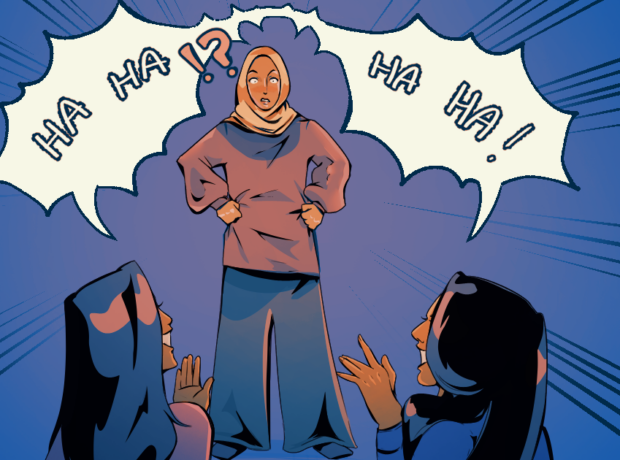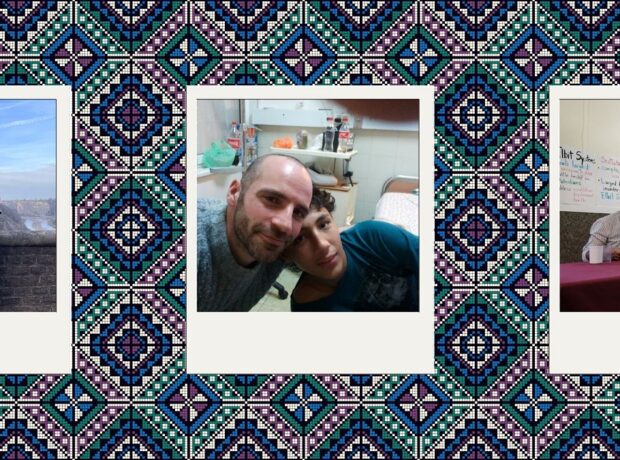Many teachers are trying to decolonise their curriculums and classrooms, but how does this work in practice? School teacher and writer Lola Okolosie finds opportunities to approach lessons in English, geography and science through a decolonial lens.
In British classrooms, how can we begin to understand slavery’s relevance to the present? I found myself asking this question in one particular lesson at the high school in London where I teach English.
In the spirit of wanting to challenge what my pupils ‘knew’ and where they ‘knew it from’ I took a little detour during a Geography lesson that I had to cover for a colleague.
My interest was already piqued at reading that the lesson would focus on the Caribbean island of Haiti. Pupils were asked to analyze what factors led to Haiti’s high death toll in the aftermath of its devastating 2010 earthquake which left 220,000 dead and 1.5 million homeless.
Source materials were given to pupils to help them arrive at a conclusion. These consisted of an article on Haiti’s weak building regulations and the disordered government response which instructed citizens to leave dead bodies in the street.
Pupils were also given source material on Chile, which also in 2010 suffered a powerful 8.8 magnitude earthquake. These source materials detailed the strict building regulations Chileans follow which led to fewer building collapses as well as an excerpt of the country’s Disaster Management Reference Handbook produced by its National Emergency Office.
The workbook taking pupils through these materials finally asked them to consider why, given that Haiti’s earthquake was less severe, a 7 magnitude, the country experienced such catastrophic loss of life?
No mention was made of how Haiti’s poverty might have explained its lack of preparedness for this tragedy. There was nothing on Haiti’s history – of its people being forced into slavery after the arrival of Christopher Colombus or of being colonized by France. There was nothing of the Haitian Revolution, the only successful slave revolt in human history, precipitating the end of slavery not only in Haiti (then Saint-Dominigue) but in all French colonies. There was nothing on the global response to this revolt, or how as a nation of freed Black slaves, Haiti was perceived as a threat to the existing world order. There was nothing on how, once Haiti gained freedom from its French slave masters, it was made to pay reparations to them for loss of earnings. There was nothing on how these ‘reparations’ would take 122 years for Haiti to pay off. By 1915, the interest accumulated on Haiti’s ‘debt’ meant that 80% of its national income went towards paying it off.
Why, as I took a detour to give pupils a brief summary of this history, had it not been considered worthwhile source material? This was pertinent social context and yet the students had no access to it.
The question of how to connect slavery with our present moment has, for some time now, been hotly contested. Be it the National Trust or Oxbridge colleges, there are a vociferous few who contend that the past has no relation to the present and that excavating it is merely an exercise in ‘moralising’ in order to heap guilt onto white people.
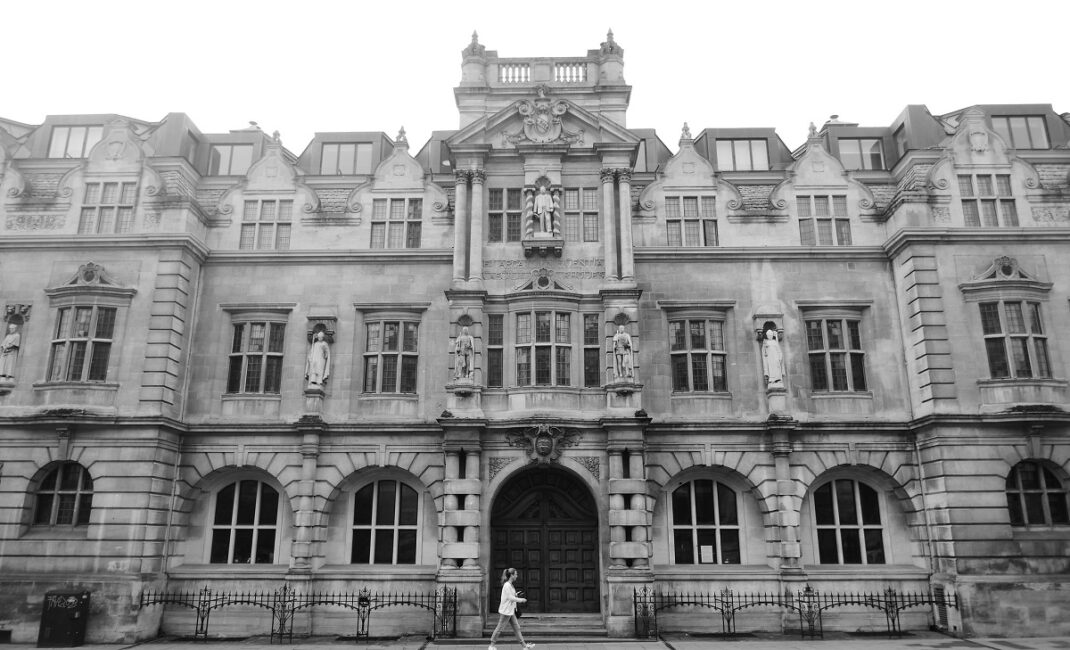
Photo of Oriel College showing the Cecil Rhodes statue, by Duncan Cumming via Flickr.
Then there are those many other institutions, like the financial behemoth Lloyds of London, whose handwringing apology begs the question Panashe Chiumadzi brilliantly asks, ‘With what are you apologising?’ In other words, what are the substantive measures institutions with historical links to slavery are taking to make recompense? Indeed, are they even seeking to work in collaboration with the descendants of the enslaved to create a better world? In that dynamic of collaboration, there is the tacit acceptance that the consequences of wrongs committed centuries ago, continue in the social and economic inequalities lived out today and that we must pay attention to them rather than seek to cut them completely out of our consideration.
Within education, the soul searching precipitated by the murder of George Floyd, reignited long held debates over the ways in which the curriculum as it was, reflected the problem of Britain’s engagement, or lack thereof to be more precise, with its destructive past.
The government, via the Department of Education, remained reluctant to acknowledge the centrality of slavery and colonialism, not only to British wealth but also its cultural output.
I remember designing a series of lessons to a year 9 top set English class on the ways in which we could use postcolonial theory to analyse the Victorian classic and GCSE set text, Robert Louis Stevenson’s, Jekyll and Hyde. Only one colleague seemed to agree with my view that we couldn’t teach this text without at least acknowledging the relationship between the pseudoscience of phrenology influencing Stevenson’s representation of the evil Mr Hyde and the ‘scientific racism’ of eugenics which it was so closely related to.
Yes, it is a novel about dualism of good and bad that exists within us all, but in the context of a Victorian England that ruled a fifth of the world, it is also a reflection of the belief in European racial superiority. Without the idea of a racial hierarchy, Africans couldn’t be pushed into the ‘zone of nonbeing’, to quote Franz Fanon. Slavery and colonialism were rationalized through the very negation of African’s personhood. The legacies of such thinking remain with us today through the insidious concept of race.
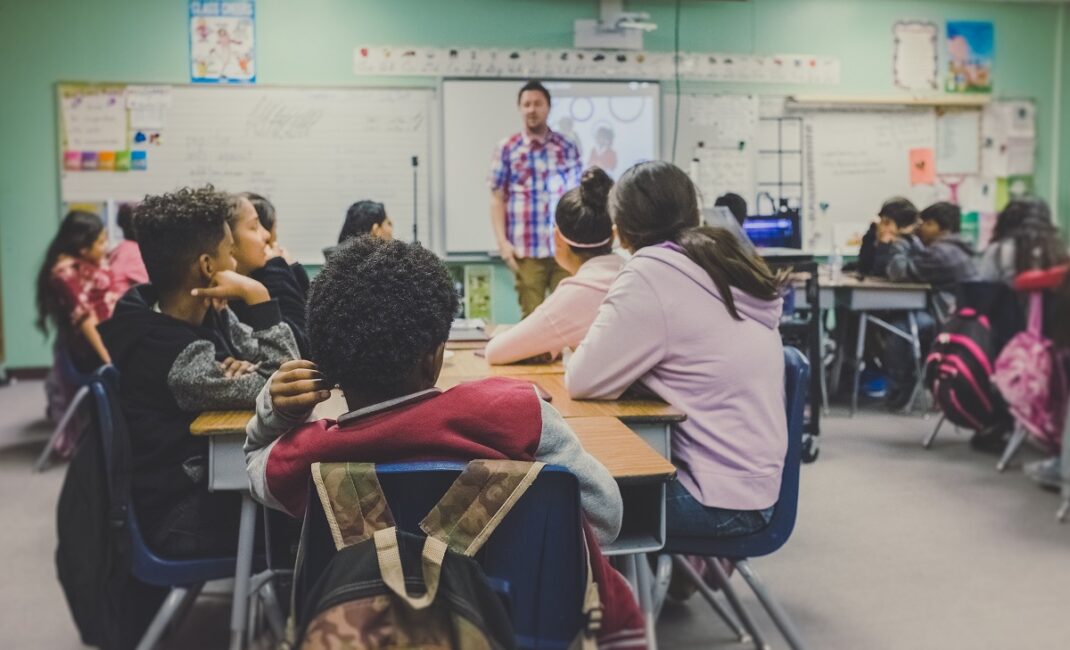
Photo of teacher in a classroom by Kenny Eliason via Unsplash.
In the advent of the Black Lives Matter protests that shook so many out of a convenient ignorance, many more school departments are keen to take on the work of reappraising their curriculum. Those tasked with designing schemes of work are keen to see where they can expand what pupils are taught in order to give voice to silences and write in the blank spaces. Admirable as this is, it constitutes, nevertheless, steps in the right direction as opposed to reaching our destination.
We can go further by enabling our students to make the connections between then and our modern, globalised world.
What does that look like practically? Take a text like Shakespeare’s The Tempest- a play concerned with the ramifications of conquest, enslavement and colonisation. When I was myself taught it, many moons ago, first as a middle schooler and then as a GCSE student, no mention was ever made, other than a brief look at the relationship of patronage between monarch and playwright or the difference between a Duke and Prince in the city states of Italy. Instead, much was made of Caliban as a ‘noble savage’. The former because Shakespeare gifts him the most poetic of lines and ‘savage’ because of his traitorous lechery. Conspicuously absent was the British political context in which the Bard created his fantastical world.
Now, my students are taught it using the famous Armada Portrait. Painted after England defeated the Spanish Armada, Elizabeth I sits in the foreground, her wealth and royalty displayed not only in her bejeweled attire and crown but also the luxurious interior she is positioned within. Under her right hand is the globe. Accompanying the image, pupils are given a text which informs them that Elizabeth’s era is sometimes called ‘The Age of Exploration’ and that any new land found by her many explorers became England’s, allowing Elizabeth to spread her rule over into North America, the West Indies and parts of India. When, then, we are introduced to a Caliban who curses his master and declares “This island’s mine, by Sycorax my mother, / Which thou tak’st from me” pupils were better able to hear the critique of colonial expansion inherent within it.
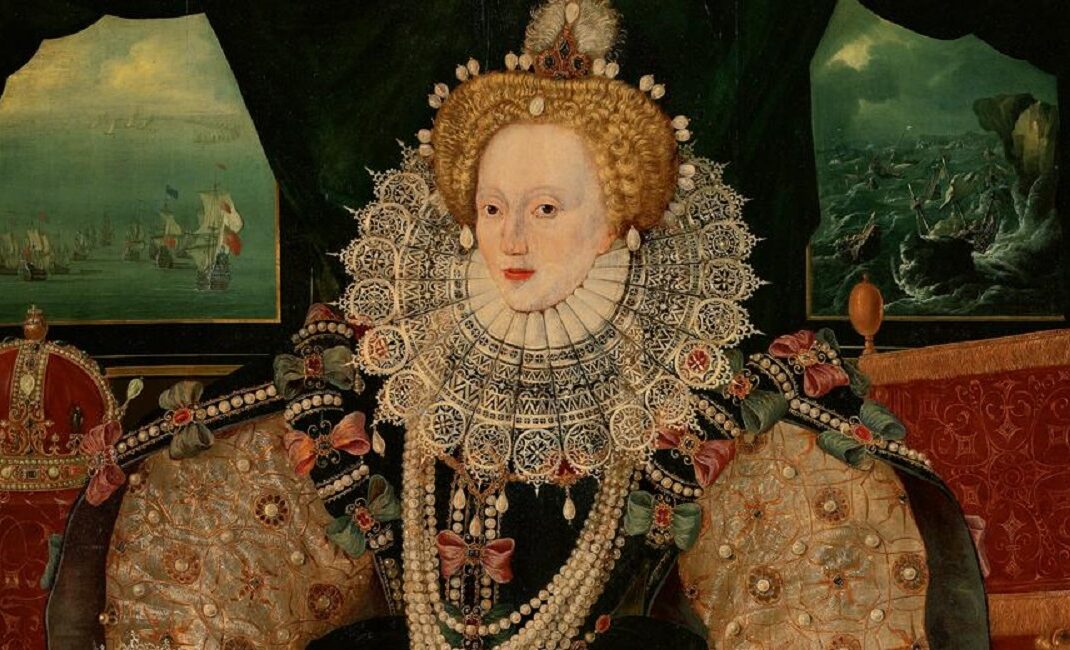
The 1588 Armada Portrait © National Maritime Museum, Greenwich, London
For students to understand this distant history’s relationship to their present, I asked them to consider how a worrying number of the world’s languages are under threat of extinction because of the preeminence of English.
Suddenly, what could have been a dusty lesson in which pupils are ‘told’ about their history, was transformed into a reality they understood they themselves were implicated within.
Students should be taught that while the famed Age of Enlightenment, or Age of Reason, gave us groundbreaking discoveries of scientists and mathematicians like Isaac Newton, it was also fueled by the greedy expansion of slavery and colonialism. Few pupils are aware that Newton’s discovery of gravity was not the sole result of sitting under an apple tree. Knowing that the gravitational pull of the moon affects ocean tides, Newton required tide readings from across the globe. He received these from readings collected by East India Company officers. Without Newton’s universal law of gravitation, engineers would be without the equation needed to propel rockets into space. Without these, we would have no GPS, no weather forecasts and no broadband, amongst other everyday essentials. Pupils should be taught how, to quote historian Howard W. French ‘the globe became permanently stitched together and thus became “modern”’.
Yet for a newer teacher or perhaps one not well versed in discussions about decolonising the curriculum, the question might well be, where do I start? We can begin by asking ourselves questions on where, within the curriculum, there are noticeable gaps? Which topics would benefit from an incorporation of material once dismissed as marginal or irrelevant? How might pupils’ critical and evaluative thinking be developed to understand that assumed notions of objectivity and neutrality are themselves politically loaded? How might we enable them to learn about what has been obscured or silenced and to ask questions about who loses and gains as a result? What should be clear in this approach is the centrality of involving pupils themselves. What are the questions they have about the forces that have shaped our world? By that I mean, what questions do they bring from the world outside into the classroom? How can the exploration of such queries become woven into the curriculum so that our teaching is guided by the principle of dialogue? In doing so, not only do we enliven their experience of learning by connecting their lives to the classroom but we also enable them to meaningfully engage with the reality of our diverse society.
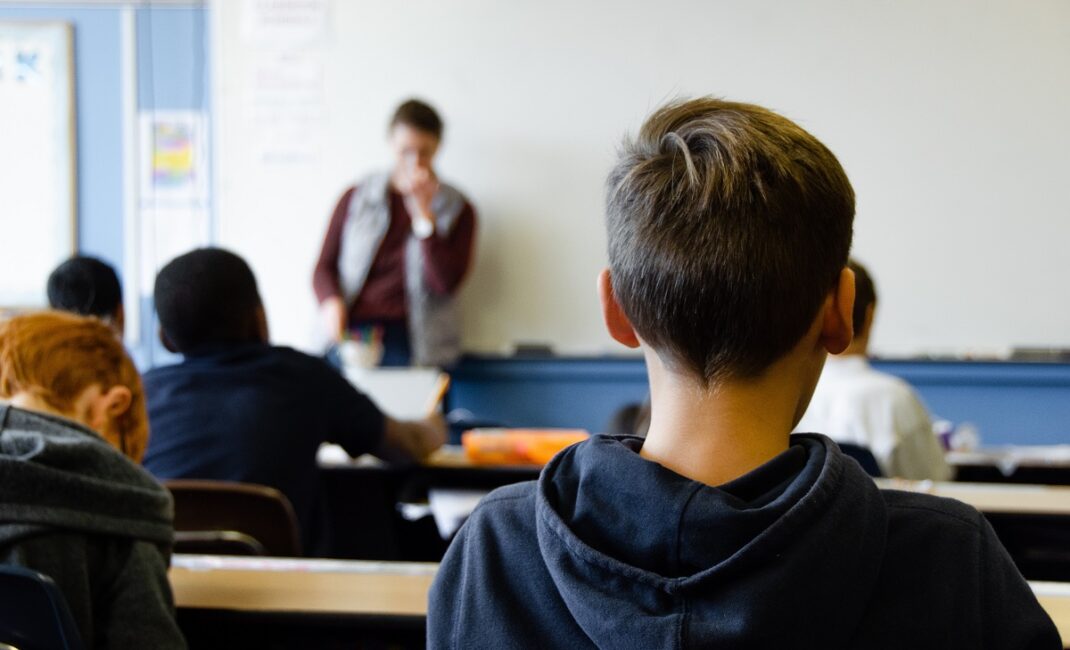
Photo of a classroom by Taylor Flowe via Unsplash.
In any classroom, the majority of pupils will know that slavery was a dark period of world history. Very few, if any, will however, understand that it was a system through which not only humans but services such as insurance, and information, like the tidal readings mentioned above, were gathered in London and propelled both city and country into the status of a superpower. Indeed, human rights lawyer Harpreet Kaur Paul argues that “Colonial practices (such as producing sugar, coffee, rice, and cotton cultivation on large slave plantations) continue to be indicators for per capita levels of poverty today.”
Are students of A-level economics widely taught this? Are they taught to consider how this past bears on the imbalanced distribution of suffering in the Global South as a direct result of the climate crisis? Are students of politics made to question why, if “between 1850 and 2002, countries in the Global North emitted at least three times as many greenhouse gas emissions as countries in the Global South, where approximately 85% of the world’s population resides”, who should take responsibility for the destruction of our planet?
Do we really expect education to be truly transformative? If our answer is ‘yes’ we have to teach our pupils how the modern world was made. Without this bedrock, they are left without a proper understanding of how we have arrived at our status quo.
Read More:

